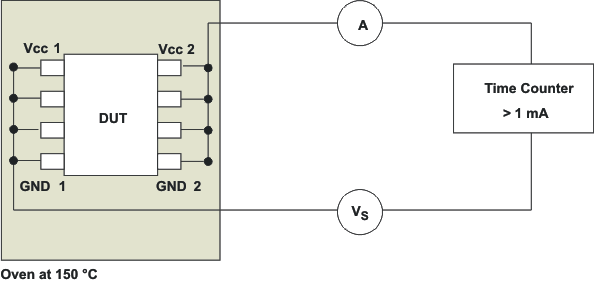ZHCSMH9C april 2022 – august 2023 TPSI3052-Q1
PRODUCTION DATA
- 1
- 1 特性
- 2 应用
- 3 说明
- 4 Revision History
- 5 Pin Configuration and Functions
-
6 Specifications
- 6.1 Absolute Maximum Ratings
- 6.2 ESD Ratings
- 6.3 Recommended Operating Conditions
- 6.4 Thermal Information
- 6.5 Power Ratings
- 6.6 Insulation Specifications
- 6.7 Safety-Related Certifications
- 6.8 Safety Limiting Values
- 6.9 Electrical Characteristics
- 6.10 Switching Characteristics
- 6.11 Insulation Characteristic Curves
- 6.12 Typical Characteristics
- 7 Parameter Measurement Information
- 8 Detailed Description
-
9 Application and Implementation
- 9.1 Application Information
- 9.2
Typical Application
- 9.2.1 Design Requirements
- 9.2.2
Detailed Design Procedure
- 9.2.2.1 Two-Wire or Three-Wire Mode Selection
- 9.2.2.2 Standard Enable, One-Shot Enable
- 9.2.2.3 CDIV1, CDIV2 Capacitance
- 9.2.2.4 RPXFR Selection
- 9.2.2.5 CVDDP Capacitance
- 9.2.2.6 Gate Driver Output Resistor
- 9.2.2.7 Start-up Time and Recovery Time
- 9.2.2.8 Supplying Auxiliary Current, IAUX From VDDM
- 9.2.2.9 VDDM Ripple Voltage
- 9.2.3 Application Curves
- 9.2.4 Insulation Lifetime
- 9.3 Power Supply Recommendations
- 9.4 Layout
- 10Device and Documentation Support
- 11Mechanical, Packaging, and Orderable Information
9.2.4 Insulation Lifetime
Insulation lifetime projection data is collected by using industry-standard Time Dependent Dielectric Breakdown (TDDB) test method. In this test, all pins on each side of the barrier are tied together creating a two-terminal device and high voltage applied between the two sides; See Figure 9-12 for TDDB test setup. The insulation breakdown data is collected at various high voltages switching at 60 Hz over temperature. For reinforced insulation, VDE standard requires the use of TDDB projection line with failure rate of less than 1 part per million (ppm). Even though the expected minimum insulation lifetime is 20 years at the specified working isolation voltage, VDE reinforced certification requires additional safety margin of 20% for working voltage and 87.5% for lifetime which translates into minimum required insulation lifetime of 37.5 years at a working voltage that's 20% higher than the specified value.
Figure 9-13 shows the intrinsic capability of the isolation barrier to withstand high voltage stress over its lifetime. Based on the TDDB data, the intrinsic capability of the insulation is 1000 VRMS with a lifetime of 1184 years.
 Figure 9-12 Test Setup for Insulation
Lifetime Measurement
Figure 9-12 Test Setup for Insulation
Lifetime Measurement Figure 9-13 Insulation Lifetime Projection
Data
Figure 9-13 Insulation Lifetime Projection
Data